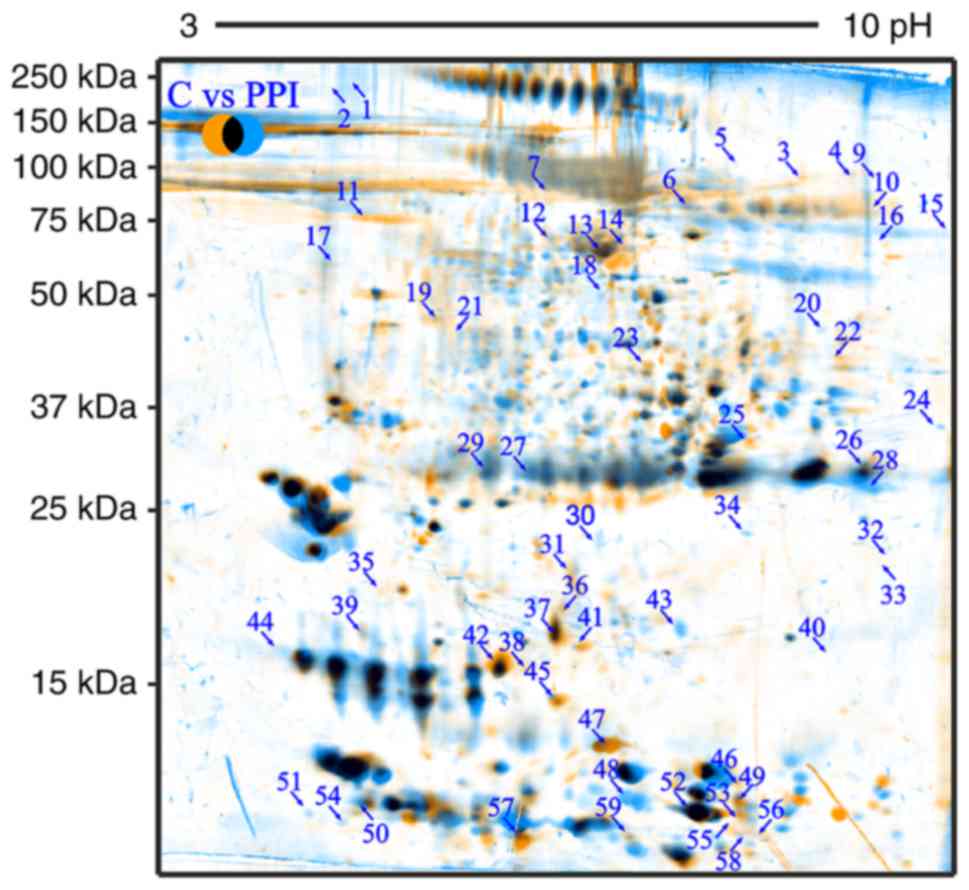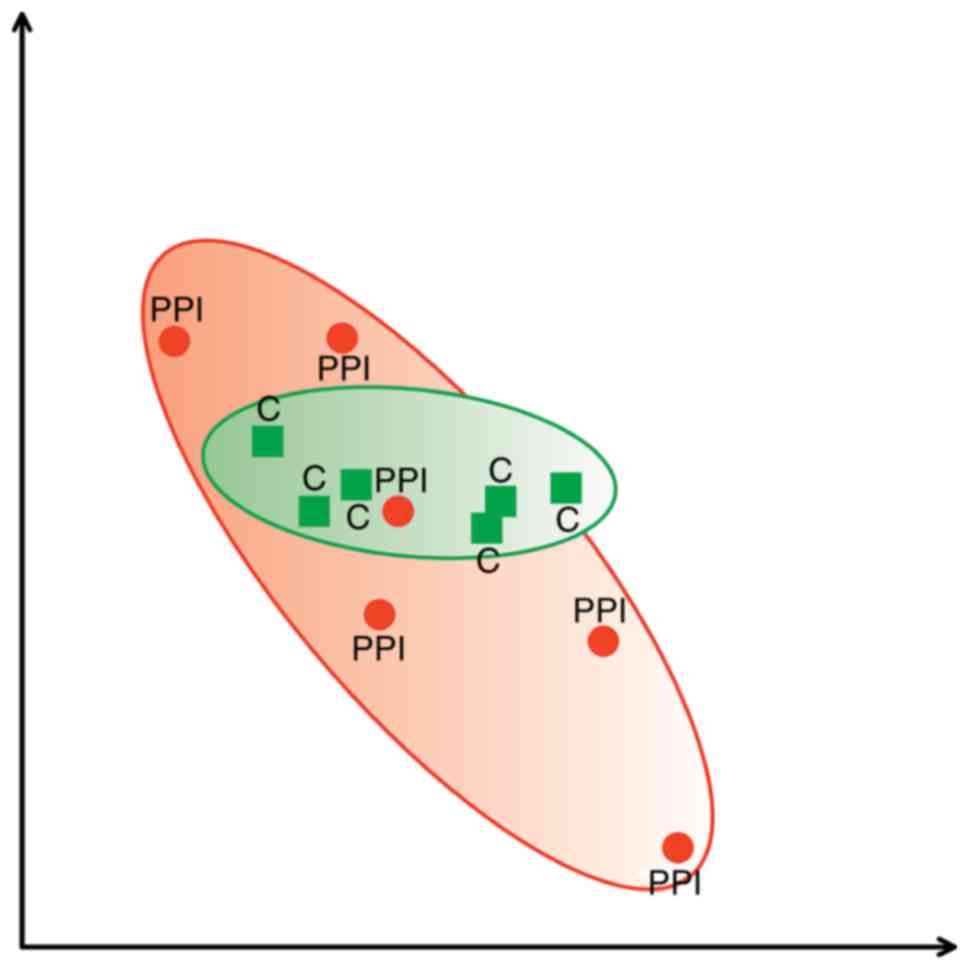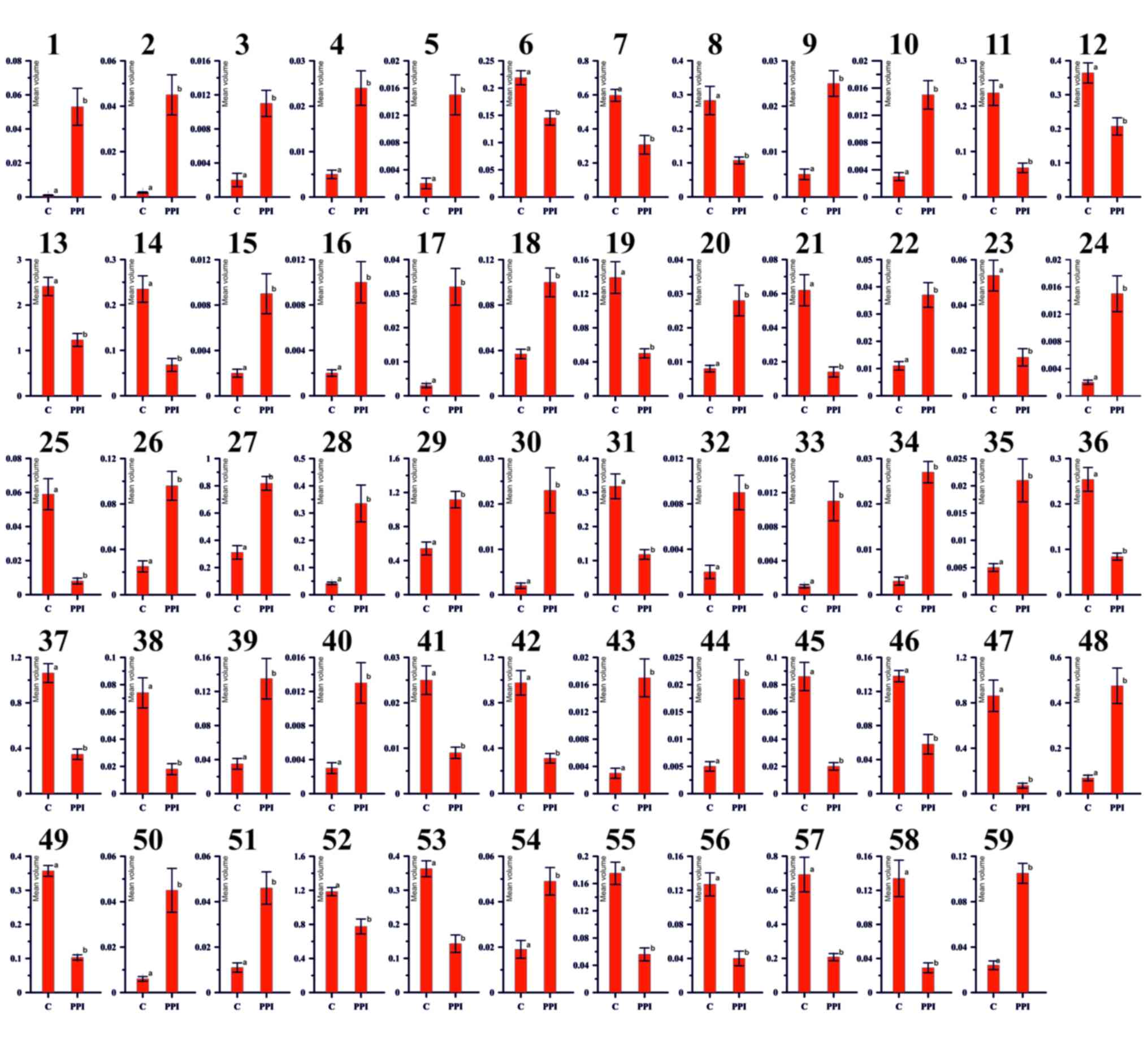|
1
|
Lima DP, Diniz DG, Moimaz SA, Sumida DH
and Okamoto AC: Saliva: Reflection of the body. Int J Infect Dis.
14:e184–e188. 2010. View Article : Google Scholar : PubMed/NCBI
|
|
2
|
Schulz BL, Cooper-White J and Punyadeera
CK: Saliva proteome research: Current status and future outlook.
Crit Rev Biotechnol. 33:246–259. 2013. View Article : Google Scholar : PubMed/NCBI
|
|
3
|
Xiao H and Wong DT: Proteomics and its
applications for biomarker discovery in human saliva.
Bioinformation. 5:294–296. 2011. View Article : Google Scholar : PubMed/NCBI
|
|
4
|
Öztürk LK, Akyüz S, Yarat A, Koç S, Gül N
and Doğan BN: Salivary lipid peroxidation and total sialic acid
levels during healthy gestation and postpartum: A longitudinal
study. Clin Biochem. 43:430–434. 2010. View Article : Google Scholar : PubMed/NCBI
|
|
5
|
Valimaa H, Savolainen S, Soukka T,
Silvoniemi P, Mäkelä S, Kujari H, Gustafsson JA and Laine M:
Estrogen receptor-beta is the predominant estrogen receptor subtype
in human oral epithelium and salivary glands. J Endocrinol.
180:55–62. 2004. View Article : Google Scholar : PubMed/NCBI
|
|
6
|
Catalano RD, Lannagan TR, Gorowiec M,
Denison FC, Norman JE and Jabbour HN: Prokineticins: Novel
mediators of inflammatory and contractile pathways at parturition?
Mol Hum Reprod. 16:311–319. 2010. View Article : Google Scholar : PubMed/NCBI
|
|
7
|
Shankar R, Gude N, Cullinane F, Brennecke
S, Purcell AW and Moses EK: An emerging role for comprehensive
proteome analysis in human pregnancy research. Reproduction.
129:685–696. 2005. View Article : Google Scholar : PubMed/NCBI
|
|
8
|
Joseph JC, Baker C, Sprang ML and Bermes
EW: Changes in plasma proteins during pregnancy. Ann Clin Lab Sci.
8:130–141. 1978.PubMed/NCBI
|
|
9
|
Mushahary D, Gautam P, Sundaram CS and
Sirdeshmukh R: Expanded protein expression profile of human
placenta using two-dimensional gel electrophoresis. Placenta.
34:193–196. 2013. View Article : Google Scholar : PubMed/NCBI
|
|
10
|
Yuan W, Heesom K, Phillips R, Chen L,
Trinder J and Bernal López A: Low abundance plasma proteins in
labour. Reproduction. 144:505–518. 2012. View Article : Google Scholar : PubMed/NCBI
|
|
11
|
Menon R, Bonney EA, Condon J, Mesiano S
and Taylor RN: Novel concepts on pregnancy clocks and alarms:
Redundancy and synergy in human parturition. Hum Reprod Update.
22:535–560. 2016. View Article : Google Scholar : PubMed/NCBI
|
|
12
|
Laemmli UK: Cleavage of structural
proteins during the assembly of the head of bacteriophage T4.
Nature. 227:680–685. 1970. View
Article : Google Scholar : PubMed/NCBI
|
|
13
|
Shevchenko A, Wilm M, Vorm O and Mann M:
Mass spectrometric sequencing of proteins silver-stained
polyacrylamide gels. Anal Chem. 68:850–858. 1996. View Article : Google Scholar : PubMed/NCBI
|
|
14
|
Jerrold HZ: Biostatistical Analysis. 4th
edition. Prentice Hall; New Jersey: 1999
|
|
15
|
Jolliffe IT: Principal Component Analysis.
2nd edition. Springer; 2002
|
|
16
|
Smit S, Hoefsloot HC and Smilde AK:
Statistical data processing in clinical proteomics. J Chromatogr B
Analyt Technol Biomed Life Sci. 866:77–88. 2008. View Article : Google Scholar : PubMed/NCBI
|
|
17
|
Chich JF, David O, Villers F, Schaeffer B,
Lutomski D and Huet S: Statistics for proteomics: Experimental
design and 2-DE differential analysis. J Chromatogr B Analyt
Technol Biomed Life Sci. 849:261–272. 2007. View Article : Google Scholar : PubMed/NCBI
|
|
18
|
Mine K, Katayama A, Matsumura T, Nishino
T, Kuwabara Y, Ishikawa G, Murata T, Sawa R, Otsubo Y, Shin S and
Takeshita T: Proteome analysis of human placentae: Pre-eclampsia
versus normal pregnancy. Placenta. 28:676–687. 2007. View Article : Google Scholar : PubMed/NCBI
|
|
19
|
Parry S, Zhang H, Biggio J, Bukowski R,
Varner M, Xu Y, Andrews WW, Saade GR, Esplin MS, Leite R, et al:
Maternal serum serpin B7 is associated with early spontaneous
preterm birth. Am J Obstet Gynecol. 211:678.e1–e12. 2014.
View Article : Google Scholar
|
|
20
|
Nelson DM, Sadovsky Y, Robinson JM, Croy
BA, Rice G and Kniss DA: Advanced techniques in placental
biology-workshop report. Placenta. 27 Suppl A:S87–S90. 2006.
View Article : Google Scholar : PubMed/NCBI
|
|
21
|
Kim MA, Lee YS and Seo K: Assessment of
predictive markers for placental inflammatory response in preterm
births. PLoS One. 9:e1078802014. View Article : Google Scholar : PubMed/NCBI
|
|
22
|
Pařízek A, Koucký M and Dušková M:
Progesterone, inflammation and preterm labor. J Steroid Biochem Mol
Biol. 139:159–165. 2014. View Article : Google Scholar : PubMed/NCBI
|
|
23
|
Romero R, Espinoza J, Gotsch F, Kusanovic
JP, Friel LA, Erez O, Mazaki-Tovi S, Than NG, Hassan S and Tromp G:
The use of high-dimensional biology (genomics, transcriptomics,
proteomics, and metabolomics) to understand the preterm parturition
syndrome. BJOG. 113:118–135. 2006. View Article : Google Scholar : PubMed/NCBI
|
|
24
|
Butt RH, Lee MW, Pirshahid SA, Backlund
PS, Wood S and Coorssen JR: An initial proteomic analysis of human
preterm labor: Placental membranes. J Proteome Res. 5:3161–3172.
2006. View Article : Google Scholar : PubMed/NCBI
|
|
25
|
Vašák M and Meloni G: Chemistry and
biology of mammalian metallothioneins. J Biol Inorg Chem.
16:1067–1078. 2011. View Article : Google Scholar : PubMed/NCBI
|
|
26
|
Menon R: Oxidative stress damage as a
detrimental factor in preterm birth pathology. Front Immunol.
5:5672014. View Article : Google Scholar : PubMed/NCBI
|
|
27
|
Zhang A, Sun H, Wang P and Wang X:
Salivary proteomics in biomedical research. Clin Chim Acta.
415:261–265. 2013. View Article : Google Scholar : PubMed/NCBI
|
|
28
|
Al Kawas S, Rahim ZH and Ferguson DB:
Potential uses of human salivary protein and peptide analysis in
the diagnosis of disease. Arch Oral Biol. 57:1–9. 2012. View Article : Google Scholar : PubMed/NCBI
|
|
29
|
Al-Tarawneh SK, Border MB, Dibble CF and
Bencharit S: Defining salivary biomarkers using mass
spectrometry-based proteomics: A systematic review. OMICS.
15:353–361. 2011. View Article : Google Scholar : PubMed/NCBI
|












